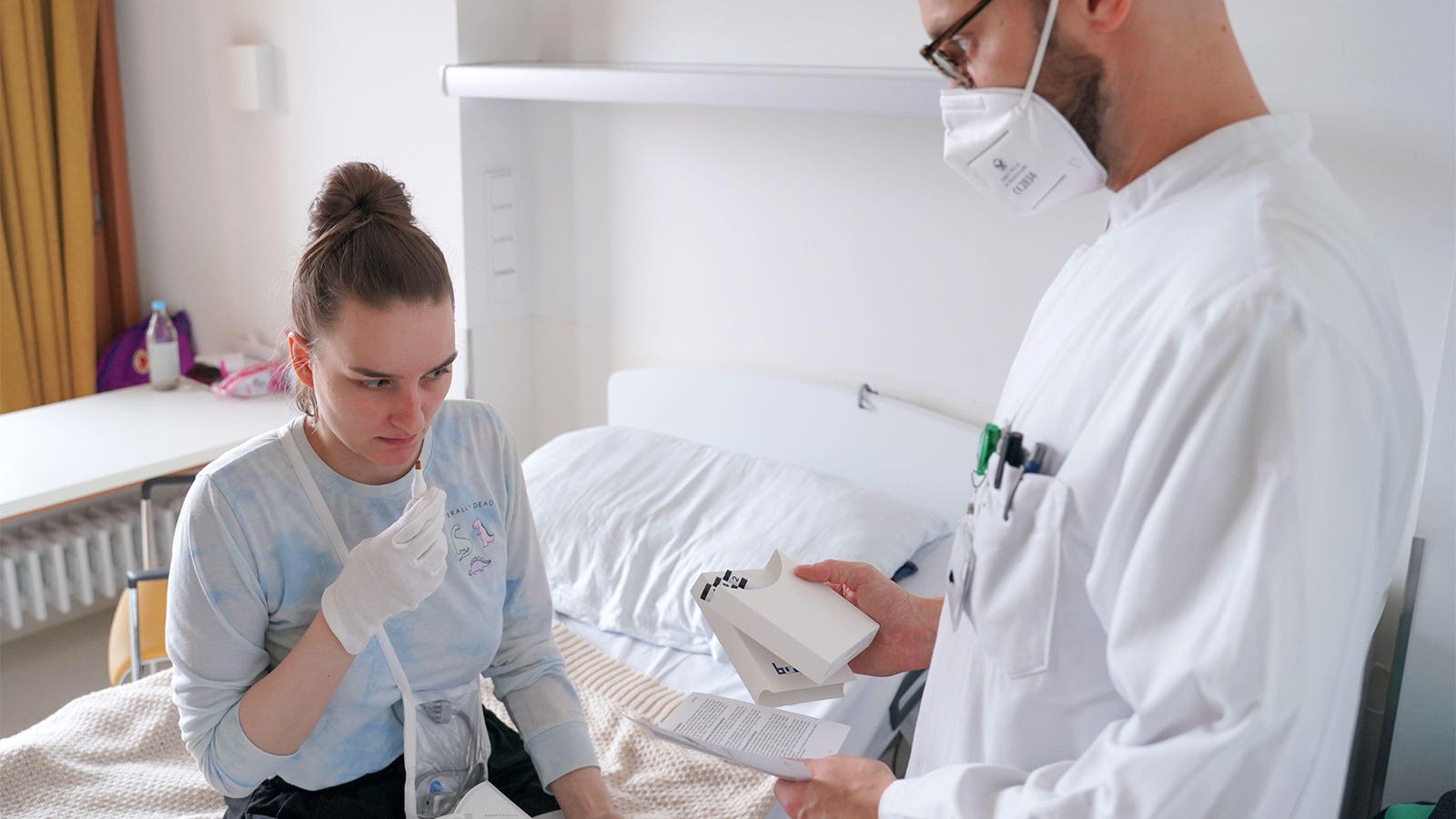Bimodal olfactory training with visual cues and the use of patient-preferred scents did not produce a clinically meaningful improvement in sense of smell among individuals with COVID-19–related olfactory loss, a 275-patient randomized trial showed.
Among participants with post-COVID infection olfactory lossopens in a new tab or window equally randomized to bimodal patient-preferred, bimodal physician-assigned, unimodal patient-preferred, and unimodal physician-assigned scents arms, none of the four interventions was associated with a significant improvement in olfaction, or with a difference between intervention arms or compared with no intervention, according to Jay Piccirillo, MD, of Washington University School of Medicine in St. Louis, and colleagues.
Study groups had no meaningful difference in change in University of Pennsylvania Smell Identification Test (UPSIT)opens in a new tab or window score from pre-intervention to postintervention. Patient-preferred versus physician-assigned training groups had a marginal mean difference of 0.73 (95% CI −1.10 to 2.56), and bimodal versus unimodal olfactory training arms had a marginal mean difference of 1.10 (95% CI −2.92 to 0.74), the researchers reported in JAMA Otolaryngology–Head & Neck Surgeryopens in a new tab or window.
“However, when the percentage of participants who experienced a clinically meaningful improvement in absolute [UPSIT] score was defined and compared between groups, the highest percentage of participants experiencing improvement was in the bimodal arms,” Piccirillo and colleagues noted.
UPSIT “responders” (i.e., those with a change ≥4 on the test’s 40-point scale) accounted for 24% of the control arm versus 53% in the bimodal, patient-preferred arm for a difference of 29 percentage points (95% CI 4-54), while self-reported impression of improvement on a global impression assessment was noted by 19% of controls compared with 35% of the bimodal, patient-preferred arm for a difference of 16 percentage points (95% CI −7 to 39%).
“The mean change in ODOR scoreopens in a new tab or window pre-intervention to postintervention was 11.6 points (95% CI 9.2-13.9), which was not deemed clinically important nor significantly different between arms,” the group also reported.
“The arm with the largest percentage of participants self-reporting improvement was the bimodal training with physician-assigned scents arm, with more than twice the percentage of responders than the control group,” the report added
A clinically meaningful improvement (much better or somewhat better) was reported by 19% of the control group, compared with 46% of participants receiving the bimodal training with physician-assigned scents, followed by unimodal training with physician-assigned scents (37%), bimodal with patient-preferred scents (35%), and unimodal with patient-preferred scents (32%).
“The variations in this study’s results based on chosen [semi-objective versus subjective] outcome measure can make it difficult to place these findings in clinical context and further highlight a challenge in the field of olfactory research,” said Carol Yan, MD, of University of California San Diego, in an accompanying editorialopens in a new tab or window.
“The definition of olfactory improvement remains nuanced,” she wrote. “A minimal clinically important difference in the UPSIT score… may not be sufficient for patients if there remain residual deficits in odorant threshold and discrimination and result in low subjective olfactory scores.”
Piccirillo and colleagues observed that the classic four physician-assigned odors (rose, eucalyptus, lemon, clove) were among the most selected odors by participants randomized to the patient-preferred arms.
Lack of significant efficacy difference between physician-assigned and patient-preferred scent may be due to the “paradoxical decline in adherence” noted in the latter group, the investigators explained. Overall, less than half of study participants were considered adherent. In previous reportsopens in a new tab or window, greater effectiveness with modified olfactory training than standard versions was thought to be due to greater adherence.
The randomized, single-blinded trial with a 2-by-2 factorial design enrolled 275 people with current olfactory loss (including an independent control group of 35) from February to May 2021. Current olfactory loss was defined as UPSIT score <34 for men and <35 for women lasting at least 3 months.
Mean duration of olfactory loss was 6 months, and most reported their olfactory ability as absent (19%) or poor (62%). Average age was 41 years, and 86% were women; 68% had concurrent phantosmia or parosmia. Mean UPSIT score at enrollment was 24.9 (SD 7.0).
“Olfactory trainingopens in a new tab or window remains a noninvasive therapeutic with minimal risk and low cost,” Yan noted. “While the additive benefit in pursuing extended variations of OT is not clear cut, these techniques can be considered while developing a treatment plan for an individual patient, somewhat similar to developing a physical therapy regimen.” And patient-selection of odorants “may improve cost effectiveness and increase adherence,” she added.
“While not definitive, these results suggest that patients with COVID-19 olfactory loss may benefit from bimodal visual-olfactory training with patient-preferred scents,” Piccirillo and co-authors concluded.
The group acknowledged limitations including the primarily white female study cohort, the large proportion of participants reporting concurrent dysosmia, and the small number of participants completing the assigned training.
Disclosures
The study was funded by the National Institutes of Health.
Piccirillo reported receiving royalty payments when Washington University licenses the Sino-Nasal Outcome Test. No other disclosures were reported by study authors. The editorialist reported no relationships with commercial entities.
Primary Source
JAMA Otolaryngology–Head & Neck Surgery
Source Reference: opens in a new tab or windowKhan AM, et al “Efficacy of combined visual-olfactory training with patient-preferred scents as treatment for patients with COVID-19 resultant olfactory loss: a randomized clinical trial” JAMA Otolaryngol Head Neck Surg 2022; DOI: 10.1001/jamaoto.2022.4112.
Secondary Source
JAMA Otolaryngology–Head & Neck Surgery
Source Reference: opens in a new tab or windowYan C “Assessing efficacy using variations of olfactory training for COVID-19–related smell loss — would a rose by any other scent smell as strong?” JAMA Otolaryngol Head Neck Surg 2022; DOI: 10.1001/jamaoto.2022.4113.
Source: COVID Smell Loss: ‘Retraining’ Mostly Flops in Trial | MedPage Today


![author['full_name']](http://msensory.com/wp-content/uploads/2023/01/KKneisel_188.jpg)











